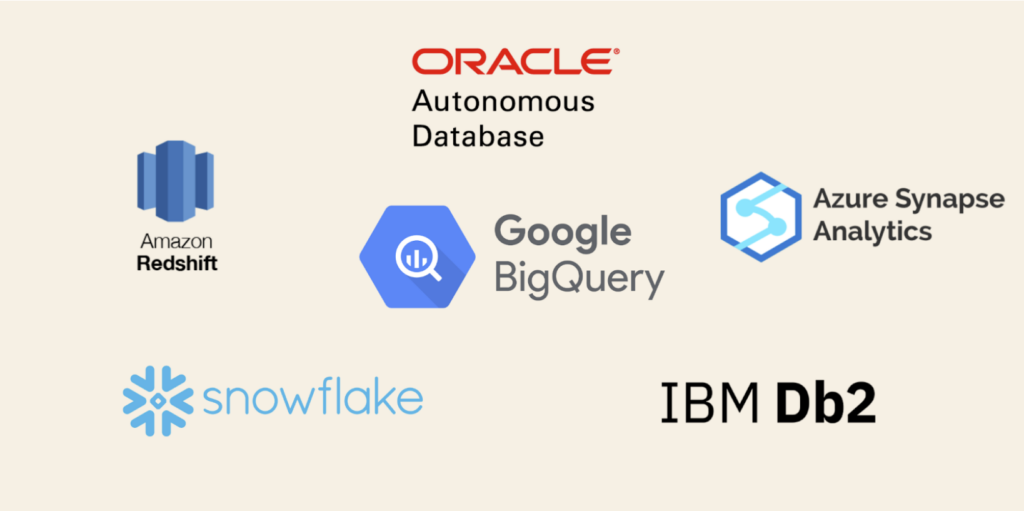
Choosing the right data warehousing tool in 2024 hinges on your specific needs and priorities. Here are some of the top contenders, each with its unique strengths:
1. Snowflake:
- Cloud-based: Offers scalability and flexibility, eliminating infrastructure management hassles.
- Fast and efficient: Handles complex queries with ease, thanks to its unique architecture.
- Wide range of integrations: Connects seamlessly with various data sources and BI tools.
- Pricier than some competitors: Pay-per-use model can add up for large datasets.
2. Google BigQuery:
- Highly scalable and serverless: Handles massive datasets effortlessly, without server management.
- Cost-effective: Charges per query, making it suitable for variable workloads.
- Integrated with Google Cloud Platform: Leverages Google’s infrastructure for powerful analytics.
- Limited to Google Cloud environment: Not ideal for multi-cloud strategies.
3. Amazon Redshift:
- Part of Amazon Web Services (AWS): Tight integration with other AWS services for a cohesive experience.
- Fast and powerful: Handles demanding analytical workloads efficiently.
- Automatic scaling: Adapts to changing data volumes seamlessly.
- Potentially vendor-specific lock-in: May not be as flexible for multi-cloud deployments.
4. Microsoft Azure Synapse Analytics:
- Unified data platform: Combines data warehousing, analytics, and lake capabilities.
- Visual data exploration: Built-in tools for interactive data analysis.
- Deep integration with Azure ecosystem: Seamless experience within the Microsoft environment.
- Complex pricing structure: Can be challenging to predict costs for diverse workloads.
5. IBM Db2 Warehouse:
- Scalable and secure: Handles large datasets with robust security features.
- Flexibility: Supports both on-premises and cloud deployments.
- Mature and reliable: Proven track record for mission-critical workloads.
- Potentially higher upfront costs: Licensing fees can be a factor for budget-conscious users.
Choosing the right tool:
Consider these factors to make an informed decision:
- Data volume and complexity: Do you need to handle massive datasets or complex data structures?
- Scalability and performance: How important is it to scale seamlessly with changing data volumes and query demands?
- Cloud vs. on-premises: Do you prefer a cloud-based solution or an on-premises deployment for more control?
- Budget: What are your budget constraints, considering licensing fees, usage charges, and maintenance costs?
- Integration needs: Does the tool integrate well with your existing data sources, BI tools, and other applications?
By carefully evaluating your requirements and comparing these top contenders, you’ll find the data warehousing tool that empowers your organization to unlock valuable insights from your data in 2024.
Say goodbye to the hassles of bike ownership! MotoShare.in offers affordable rentals, whether you need a scooter for errands, a bike for a road trip, or a reliable ride to explore new cities.

 Starting: 1st of Every Month
Starting: 1st of Every Month  +91 8409492687
+91 8409492687  Contact@DevOpsSchool.com
Contact@DevOpsSchool.com
